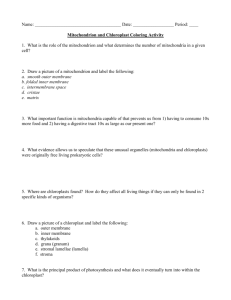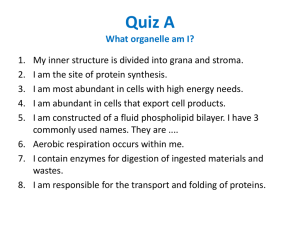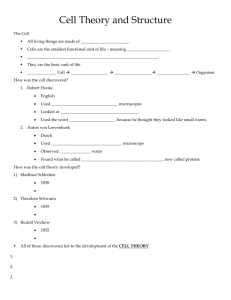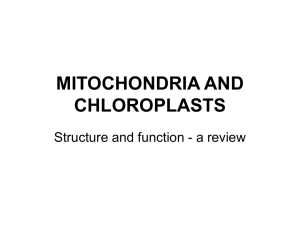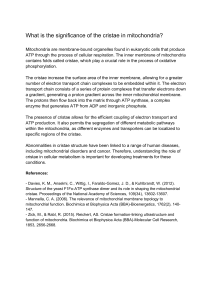outer and inner membranes, cristae C. Have their own DNA - e-CTLT
advertisement
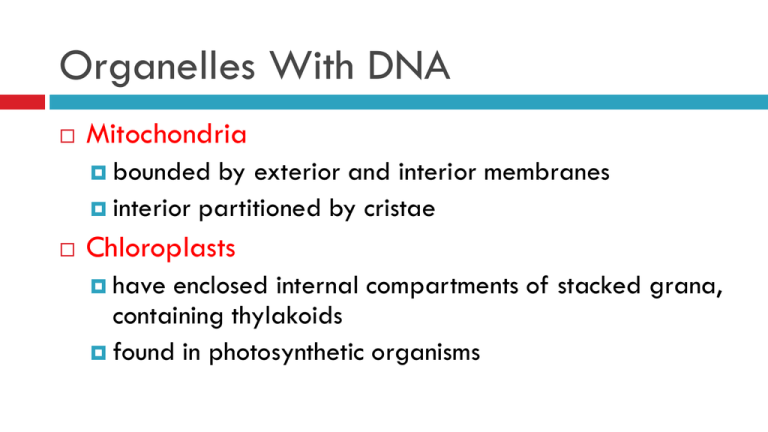
Organelles With DNA Mitochondria bounded by exterior and interior membranes interior partitioned by cristae Chloroplasts have enclosed internal compartments of stacked grana, containing thylakoids found in photosynthetic organisms Mitochondria A. "Powerhouse of the cell" - cellular metabolism B. Structure- outer and inner membranes, cristae C. Have their own DNA Mitochondria- Introduction sausage-shaped typically 1 to 4μ long, divide by fission outer membrane is porous less porous inner membranes loosely described as a large wrinkled bag packed inside of a smaller, unwrinkled bag. http://www.tutorvista.com/biology/structure-mitochondria Outer membrane simple phospholipid bilayer, containing protein structures called porins Porins render it permeable to molecules of about 10 kilodaltons or less (the size of the smallest proteins). Ions, nutrient molecules, ATP, ADP, etc. can pass through the outer membrane with ease. The intermembrane space has an important role in the primary function of mitochondria, which is oxidative phosphorylation. Inner membrane freely permeable only to oxygen, carbon dioxide, and water. Its structure is highly complex, including all of the complexes of the electron transport system, the ATP synthetase complex, and transport proteins. The wrinkles, or folds, are organized into lamillae (layers), called the cristae (singlular: crista). The cristae greatly increase the total surface area of the inner membrane. Matrix contains the enzymes for the citric acid cycle reactions. The matrix also contains dissolved oxygen, water, carbon dioxide, the recyclable intermediates that serve as energy shuttles, matrix components can diffuse to inner membrane complexes and transport proteins within a relatively short time-diffusion is slow process. Isolated mitochondria, show a rounded appearance in electron micrographs-mitochondria are spherical Plastids three types 1. Chloroplast: By trapping solar energy, green plastids manufacture food through photosynthesis 2. Chromoplasts provide color to various flowering parts the primary function in the cells of flowers is to attract agents of pollination, and in fruit to attract agents of dispersal 3.Leucoplasts are the centers of starch grain formation; they are also involved in the synthesis of oils and proteins Chloroplasts •Chloroplasts are larger and more complex than mitochondria •Grana – closed compartments of stacked membranes •Thylakoids – disc shaped structure – light capturing pigment •Stroma – fluid matrix three membranes divide chloroplasts into three distinct internal (1) the intermembrane space between the two membranes of the chloroplast envelope; (2) the stroma, which lies inside the envelope but outside the thylakoid membrane; and (3) the thylakoid lumen. Endosymbiosis Endosymbiotic theory suggests engulfed prokaryotes provided hosts with advantages associated with specialized metabolic activities. Theory of Endosymbiosis

